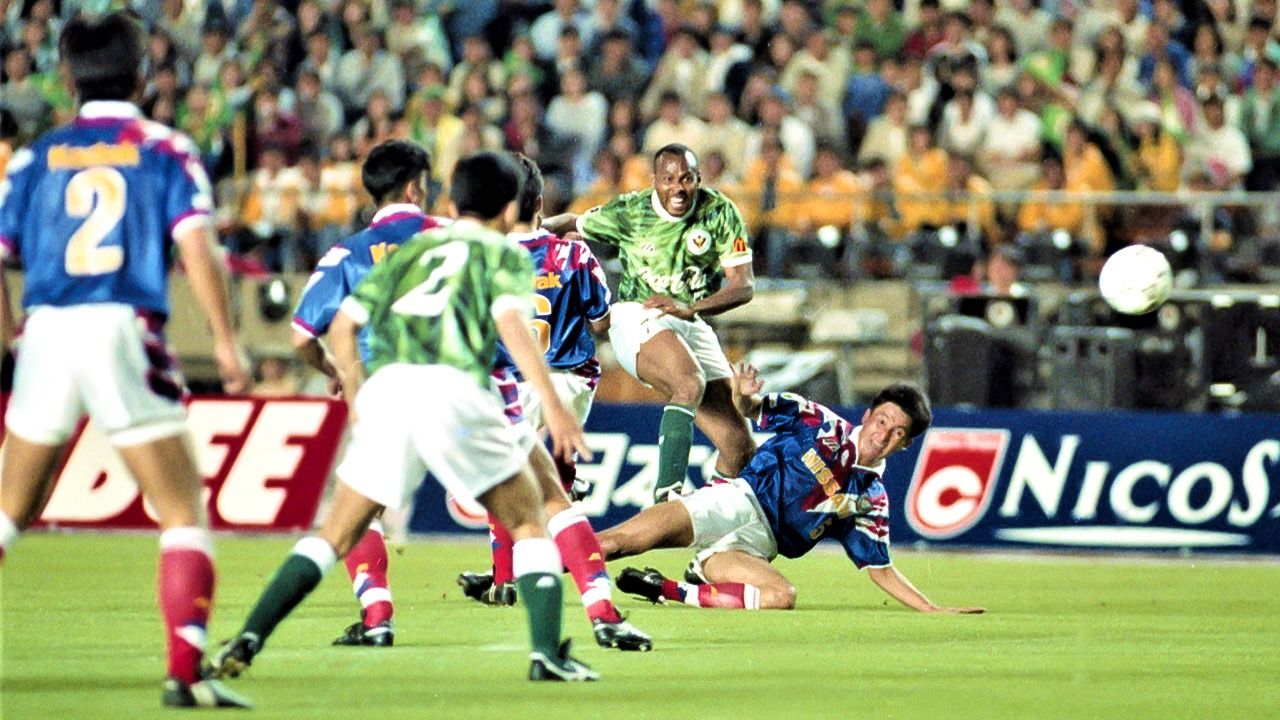
The J. League Turns 30: Ups, Downs, and the Road Ahead for Japanese Professional Soccer
Sports- English
- 日本語
- 简体字
- 繁體字
- Français
- Español
- العربية
- Русский
A Leading League in Asia
The J. League, Japan’s top-flight professional soccer competition, celebrated its thirtieth anniversary in May this year. Since kicking off in 1993 with a modest 10-team field, the league has since burgeoned into a three-tiered system—J1, J2, and J3—boasting 60 clubs in all. Japanese soccer has made great strides over the last three decades, and today the J. League stands as one of the top professional leagues in Asia.
This last point was driven home on May 6 when the Urawa Red Diamonds won their third Asian Champions League title, downing Saudi Arabian powerhouse and four-time ACL champs Al-Hilal 2–1 on aggregate. The Riyadh-based side was making its record ninth appearance in the final of the continental club competition and third in the last five years. Japanese clubs have similarly made their presence known in the finals. Since 2017, the Reds have appeared three times and fellow J1 side Kashima Antlers once.
Urawa’s victory gives Japan a total of eight titles dating back to the ACL’s predecessor Asian Club Championship, second behind all-time leader South Korea, whose teams have raised the trophy 12 times, and two ahead of Saudi Arabia’s six titles.
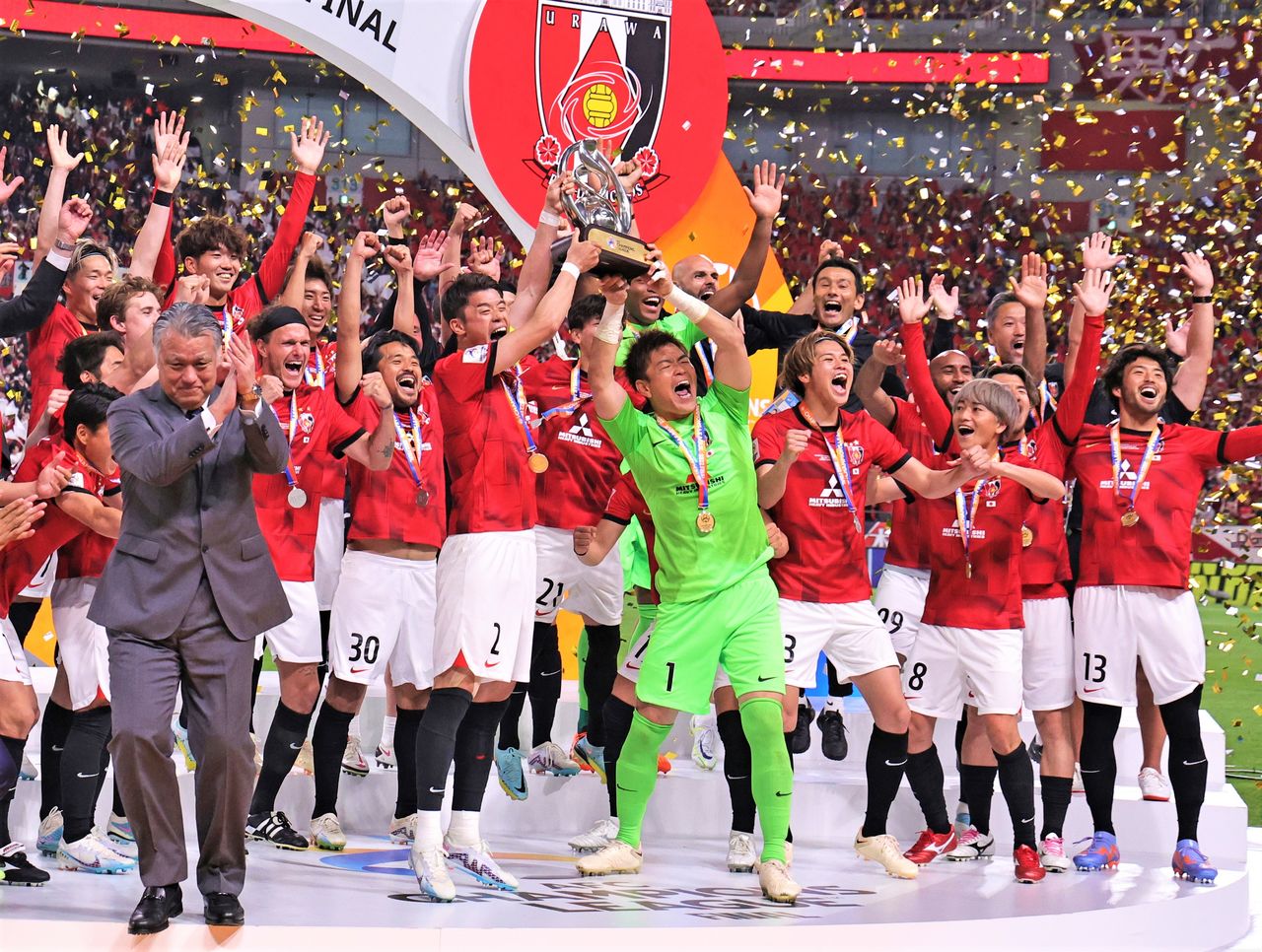
The Urawa Red Diamonds lift the ACL trophy at Saitama Stadium on May 6, 2023, adding a third championship to their 2007 and 2017 titles. (© Jiji)
Another indicator of the J. League’s prominence is the growing number of players moving to clubs overseas. There are currently upward of 100 Japanese footballers playing in Europe, led by names like Mitoma Kaoru (Brighton, English Premier League), Hatate Reo (Celtic, Scottish Premiership), and Tomiyasu Takehiro (Arsenal, English Premier League).
This exodus of domestic talent has sparked concerns that the league is being hollowed out. Certainly, the lengthening list of star players moving to Europe and elsewhere presents a challenge to clubs’ attempts to chart future plans. However, as Urawa’s recent ACL success suggests, the level of play in the J. League has not suffered from the outflow of talent as feared, but has in fact been bolstered. As Japan’s national team has come to be more and more dominated by players based abroad, the J. League now serves as a proving ground for Japanese footballers hoping to take their skills overseas and one day represent Japan in international play.
Financial Footing
The COVID-19 pandemic had a major impact on clubs’ bottom lines. The average attendance of J1 games had been on the rise since 2014, topping 20,000 for the first time in 2019. To put this in perspective, from 2013 to 2018 the Bundesliga had the highest average attendance globally at 43,302 spectators per game, followed by the English Premier League at 36,675. The J. League during the same period ranked a respectable twelfth at 18,227, one rung below second-division English Football League Championship (18,814) but ahead of Brazil’s Campeonato Brasileiro Série A (17,402) and the Scottish Premiership (11,697) at thirteenth and fourteenth, respectively.
However, attendance plummeted as the government rolled out anti-COVID-19 measures restricting the number of spectators at matches. By 2021, the drop in ticket revenue and other factors had pushed 22 of the 57 clubs across the league’s three tiers into the red, and another 12 were saddled with excessive debt.
These figures need to be taken with a grain of salt, however. Since the relaxing of pandemic restrictions, the league has rebounded, with overall club revenue recovering to 93% and expenses to 97% of 2019 levels. Setting aside the post-global-financial-crisis years of 2009 to 2011 and the pandemic-dominated 2020, the J. League has enjoyed steady growth over its three decades.
While the league currently stands on firm financial footing, the road has been rocky at times. In 1998, the Yokohama Flugels, one of the league’s founding clubs, folded when its primary sponsor withdrew support citing financial reasons, a fiasco that sullied the J. League’s reputation. Around the same time, teams like Ventforet Kōfu, Shimizu S-Pulse, Bellmare Hiratsuka (now Shōnan Bellmare), and Vissel Kobe similarly found themselves in financial straits from the loss of sponsor revenue and other fiscal woes.
Taking these cases to heart, the league in 2005 set up a special fund for clubs suffering financial strain in order to preserve their eligibility to participate in matches under the requirements of the J. League’s licensing system. The 2008 global financial crisis ushered in a period of uncertainty for teams as corporate sponsors felt the economic pinch of the downturn, and in 2009 the league famously dipped into the fund to bail out J2 side Ōita Trinita, which, bleeding red ink, stood on the brink of bankruptcy.
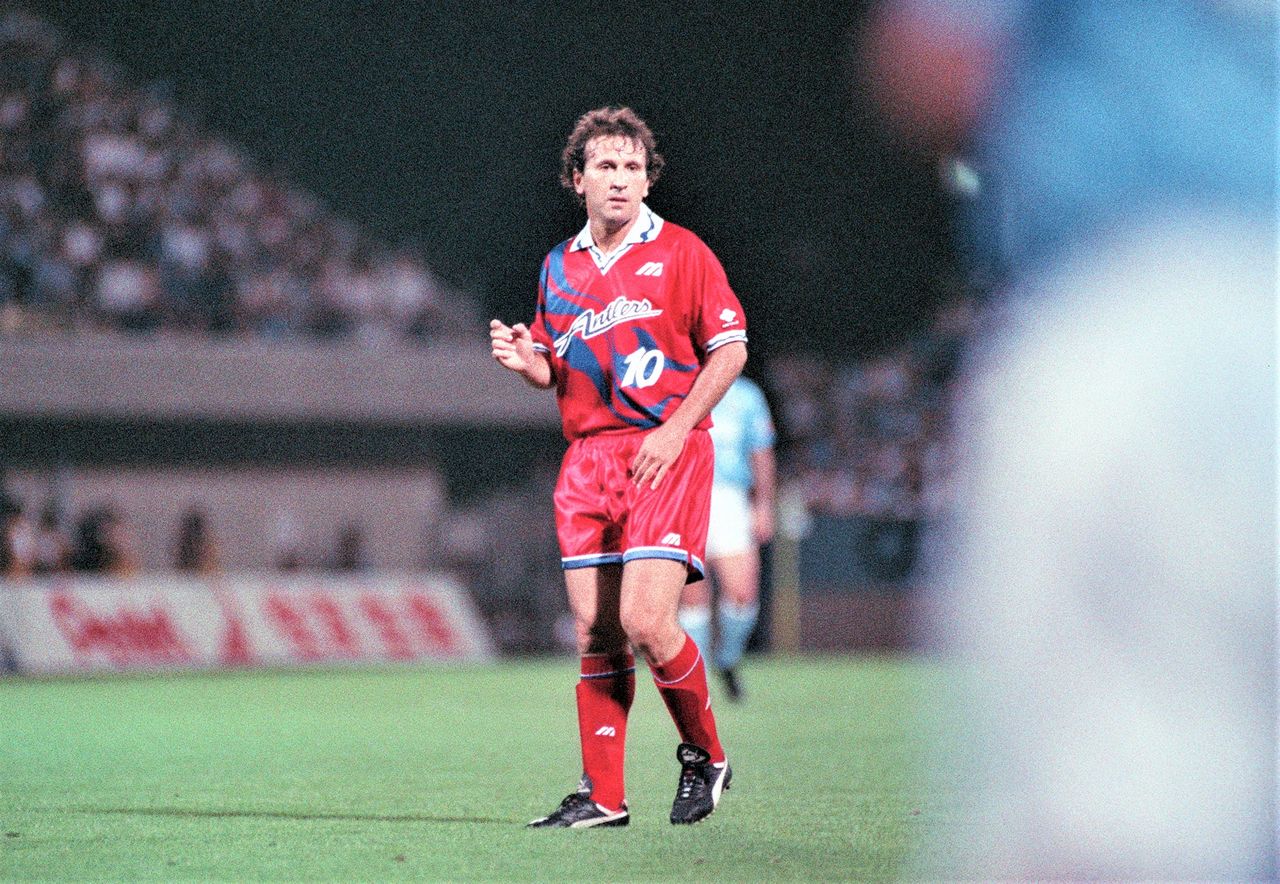
Brazilian superstar Zico plays for the Kashima Antlers in a match against Jubilo Iwata at Iwata Stadium in Shizuoka Prefecture on June 15, 1994. High-profile international players helped draw crowds and elevated the level of play in the league’s early years. (© Jiji)
Looking to overcome the drag on revenue from the prolonged global economic slump and 2011 Great East Japan Earthquake, the J. League launched its “Asian Strategy” in 2012 with an eye to sparking new growth. Rather than seeking profits solely through lucrative broadcasting deals, merchandise sales, and courting fans overseas, the league has engaged in exchanges with other Asian countries out of a desire to boost soccer across the region. These include sharing at no cost its expertise in player and coach development, club and league operations, and marketing and promotion. Such efforts have spurred further exchanges among league officials, club officers, and players along with grassroots projects, lifting the popularity of the J. League in Asia and boosting broadcasting revenue from a burgeoning overseas viewership.
Hometown Clubs
Core to the J. League’s success to date—and what has distinguished it from Japan’s leading professional sport of baseball—has been its focus on teams fostering close ties with their host community. In 30 years, the league has gone from 10 teams to 60, with nearly all of Japan’s 47 prefectures boasting clubs—just six do not. The league continues to work toward realizing its ambitious roadmap for soccer in Japan, first expressed under the banner “A J. League team in your town” and later changed to the “J. League 100 Year Vision,” which boldly proclaims the goal of “spreading happiness across the country with sports.”
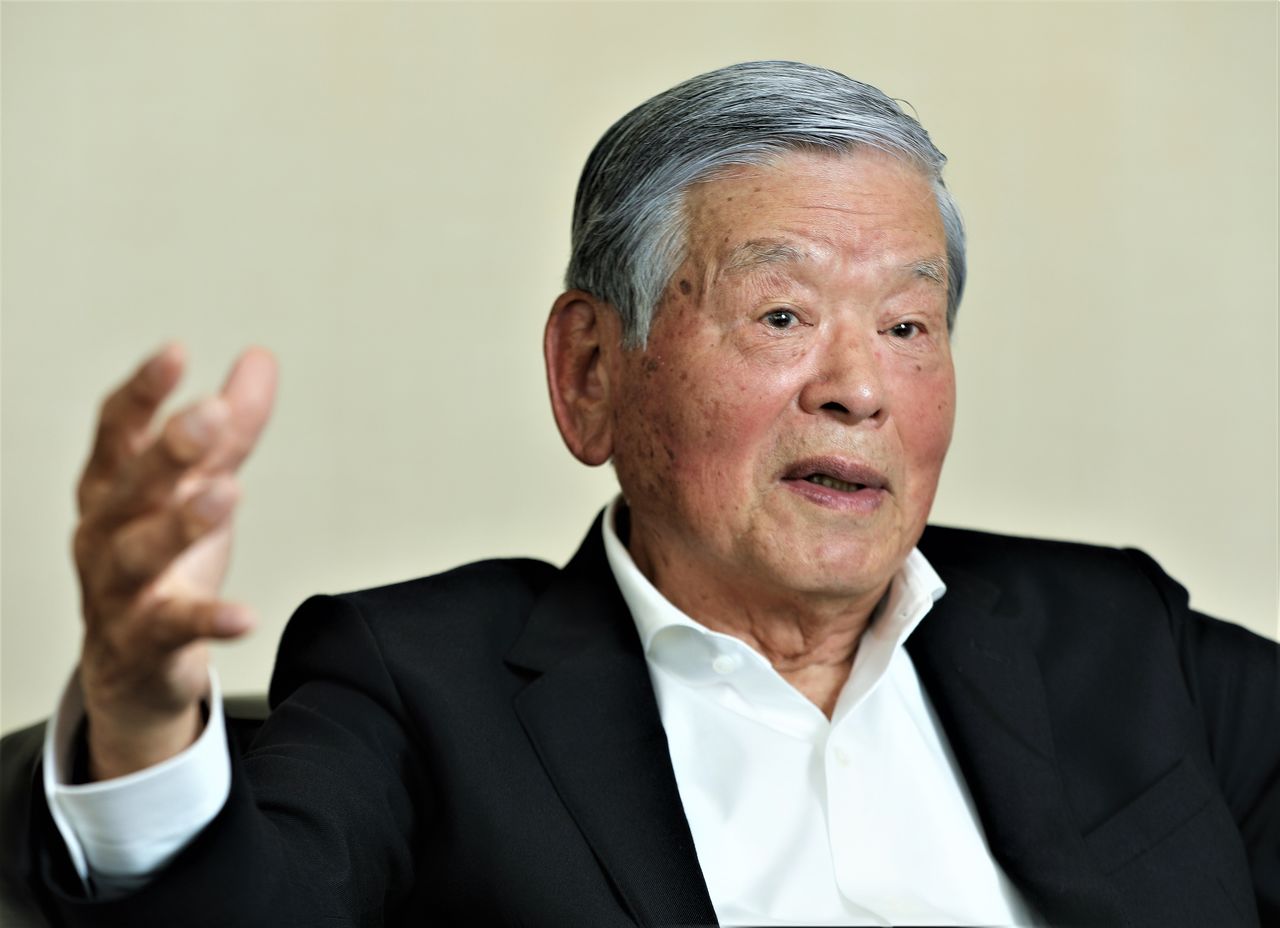
Kawabuchi Saburō was the J. League’s first chair and later president of the Japan Football Association. Photographed on April 28, 2023. (© Jiji)
Soccer has a long history in Japan, but the sport did not take root as it did in Europe and South America, where over time passion for the game has spawned distinct traditions and strong affiliations with national and local teams. The sport had its moments in the spotlight, such as Japan winning bronze at the 1968 Summer Olympics in Mexico City, but the popularity of soccer was eclipsed by that of baseball, which boasted the country’s first professional sports league and enjoyed an avid following.
The J. League in a few decades has been remarkably successful in building a soccer culture in Japan from the ground up, illustrating the great potential of the sport in places like Asia and Africa where the game’s roots are still shallow. Touting its highly optimistic “100 Year Vision,” the league continues to make progress with its community-based model, at both the professional and grassroots levels, toward its goal of raising soccer to the status of a national pastime.
In Kawasaki, for instance, locals of all ages descend each evening on Frontown Saginuma, a futsal facility run by hometown club Frontale, for fun and comradery. In other cities across Japan, as well, local J. League clubs serve to bring members of the community together through soccer and other activities.
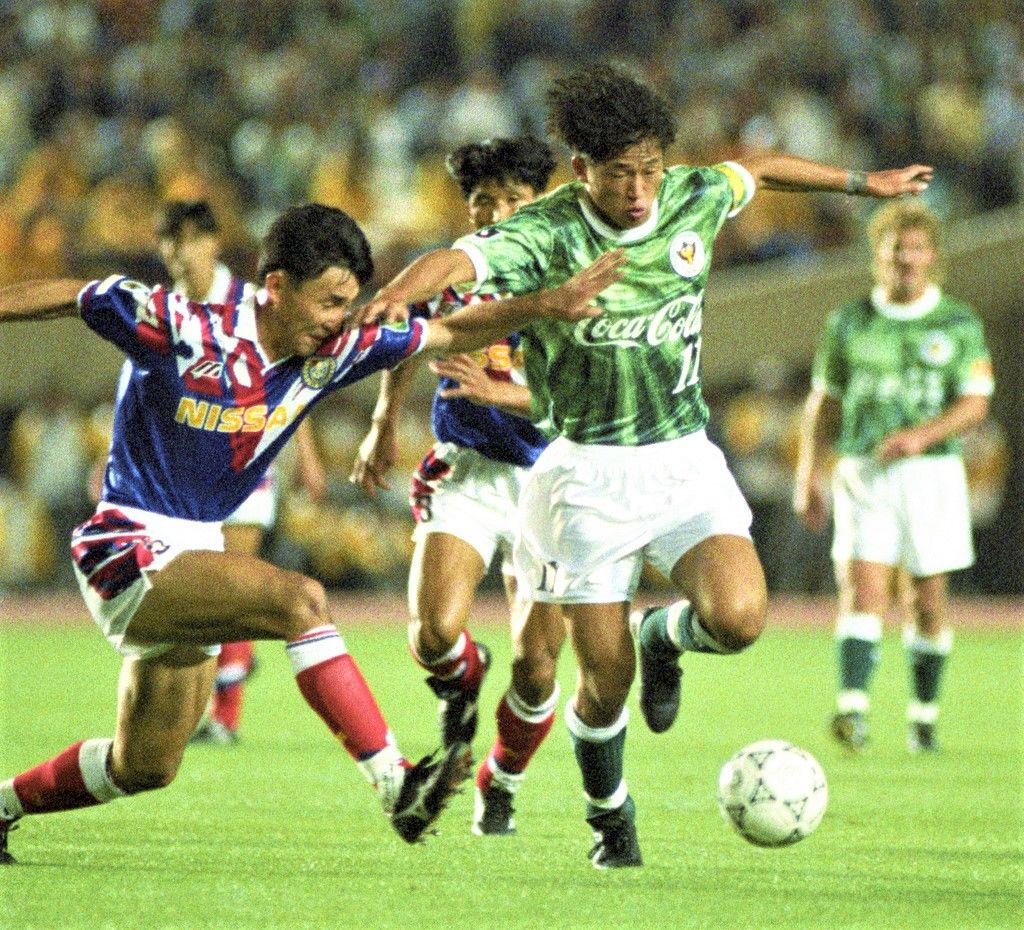
Miura Kazuyoshi, right, of Verdy Kawasaki dribbles the ball during the inaugural J. League match at the National Stadium in Tokyo on May 15, 1993. He would go on to be the J. League’s first MVP. Far from hanging up his cleats, the 56-year-old star plays to this day at Portuguese second division side Oliveirense. (© Kyōdō)
Future of the League
From the start, the J. League was more than a nascent venture to separate soccer from its corporate sponsors and build community-based teams. It represented a whole new way to enjoy professional sports, one that was free and unrestrained. It appealed especially to young, impressionable Japanese, who embraced it, turning it into a social phenomenon. As the league has established itself, however, the edgy newness it initially enjoyed has faded and it is now starting to show signs of the dreaded “Galapagos syndrome” in its failure to adapt its prized hometown model to the wider sports landscape.
Take Urawa’s ACL victory, for instance. Incredibly, the final was not broadcast on terrestrial television in Japan, denying the general public the opportunity to share in the excitement of a Japanese club triumphing at a premier event on the Asian soccer calendar. This constituted a major missed opportunity for the J. League to woo new fans amid greater competition from Japan’s rapidly diversifying professional sports scene. International events like the Rugby World Cup and the Olympic Games have bolstered momentum for professional competitions like rugby’s League One and basketball’s B. League. A slew of other sports, such as table tennis and badminton, are also enjoying growing interest and winning over young fans, all of which has eaten into soccer’s overall popularity.
Then again, the J. League’s 100 Year Vision specifically espouses the goal of fostering a rich culture of sports, not only soccer, which suggests that all is going according to plan. This raises the question of what lays in store for the J. League in the next 30 years.
Current league chair Nonomura Yoshikazu notes the J. League is pursuing a course that tackles both social and operational issues. He says that environmental measures, including offsetting carbon emissions at matches, will make the league “the greenest in the world.” It is also working to bring in highly talented players, effective coaches and managers, and capable GMs and other front-office staff who will sustain clubs far into the future. Backed with a clear vision and strong leadership, the J. League can be expected to continue to be an ever-more present fixture in Japanese society.
(Originally published in Japanese. Banner photo: Verdy Kawasaki forward Hanny Meijer, at center, makes history by scoring the first goal of the J. League on May 15, 1993, in a match against the Yokohama F. Marinos at the National Stadium in Tokyo. © Jiji.)